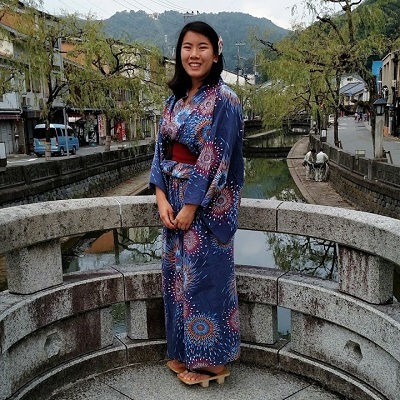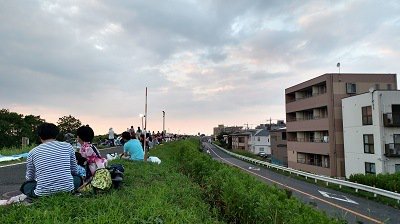Written by Kyla Aiko Smith, (Scripps College) Student Correspondent CET Japan, Fall 2018
The questions begin when people learn that my last name is “Smith,” and from there, the confusion only grows.
I have been in Japan for one week, and so far, differences between my life in Hawai‘i and Japan have been very slight. Because I have family in Japan, this study abroad experience is not my first time living in Japan, and in the past, I have never had difficulty to adjusting to life in Japan. Nevertheless, something does feel different about this trip to Japan. I am sure it is a mixture knowing that I can speak only Japanese for the next four months because of the language pledge, knowing that this trip will mark the longest time I have been abroad and away from my family, and realizing that the Japanese that I know now, although useful for day-to-day interactions, is not good enough to deeply debate environmental, political, or societal issues that are ever prevalent to college-age students.
 I grew up in Hawai‘i, a state where as of 2010, 23.6% of people identify as two or more races, and people of Japanese ancestry make up the second highest percentage of Asians, the first being those of Filipino ancestry. When I am with my Japanese-Korean mother, I have been told “You have your mother’s eyes” and “Like mother, like daughter,” but when I am with my white father, these types of comments are seldom made.
I grew up in Hawai‘i, a state where as of 2010, 23.6% of people identify as two or more races, and people of Japanese ancestry make up the second highest percentage of Asians, the first being those of Filipino ancestry. When I am with my Japanese-Korean mother, I have been told “You have your mother’s eyes” and “Like mother, like daughter,” but when I am with my white father, these types of comments are seldom made.
Instead, people tend to ask questions such as “Are you from here?” and even “What are you?” as if I were some strange animal on display in a zoo. As I have grown older, these questions bother me less and less; however, although engaging with others in conversations about race, ethnicity, and identity is important to promoting the understanding of people with diverse cultural backgrounds, those conversations most certainly have a time and place. Usually, that time and place is with people who are receptive to the nuances of other people’s situations. Usually, that time and place is not when I am at a restaurant with my family and a waiter does not understand how a man with bright blue eyes has an Asian daughter.
I was adopted from China, and my maternal mother’s family, with whom I am closest to, is Japanese and Korean. Although I did not grow up speaking Japanese, I did grow up surrounded by Japanese culture and traditions. I have fond memories of my family and me donning yukata (traditional summer clothing) at Buddhist temple grounds dancing around yagura (raised platforms) in the August heat for the annual Obon festivals (a celebration that honors ancestors). Sour tsukemono (pickled vegetables), sweet mochi (glutinous rice cakes), and salty miso soup have always been staples in my diet, and I do not remember a time when I did not know how to use chopsticks.
 Aside from the occasional prying questions, externally, especially because I am phenotypically Asian, I have never encountered problems related to fitting into the Asian cultures I grew up in. Internally, I have always struggled with my cultural identity.
Aside from the occasional prying questions, externally, especially because I am phenotypically Asian, I have never encountered problems related to fitting into the Asian cultures I grew up in. Internally, I have always struggled with my cultural identity.
As an ethnically Chinese girl who has grown up making Korean mandu (dumplings), going to Japanese Buddhist temple, and has never celebrated Chinese traditions, what am I and where do I belong? An essential aspect of how effective cultural and language immersion is is how comfortable someone feels in that new environment, and for me in Japan, the feeling that I both fit in yet also stick out is ever present. I have the next four months to trouble what it means to be fully immersed, what it means to fully belong, and how both these issues will shape my experiences as I study abroad in a place that feels so much like home, yet also feels so new.